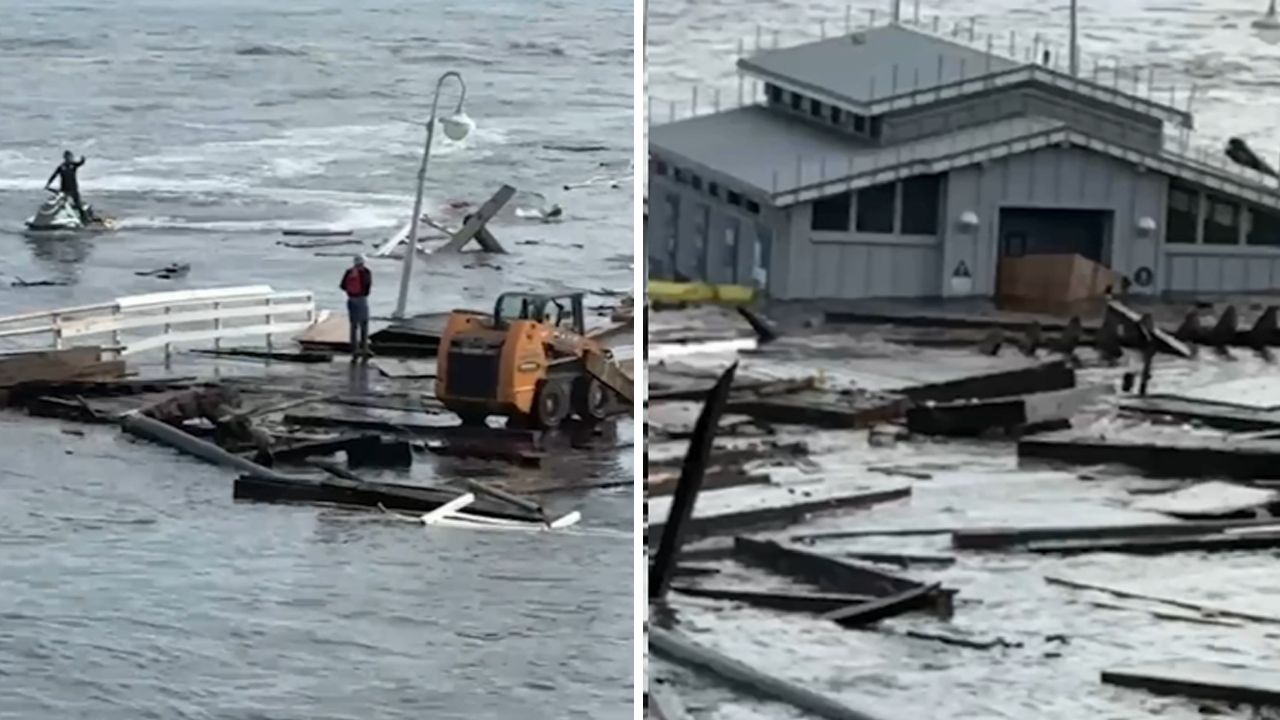
On December 23, 2024, the historic Santa Cruz Wharf, a cherished landmark since 1914, suffered a significant structural failure due to a powerful storm that battered California’s central coast. Approximately 150 feet of the wharf’s end collapsed into the Pacific Ocean, underscoring the vulnerabilities of coastal infrastructure in the face of increasingly severe weather events.
The Collapse and Immediate Aftermath
The incident occurred around 12:45 p.m. when massive waves, some exceeding 30 feet, relentlessly pounded the wharf. This onslaught caused the terminal section, which had been closed for renovations since January due to prior storm damage, to give way. The collapse resulted in three individuals—two engineers and a project manager—falling into the ocean. Fortunately, all were rescued without serious injuries.
Debris from the collapse, including a restroom facility and construction equipment, was scattered along the coastline near the San Lorenzo River and Seabright Beach. Authorities have cautioned the public to avoid attempting to retrieve any debris due to safety concerns.
Community Response and Safety Measures
In response to the collapse, the Santa Cruz Municipal Wharf has been closed indefinitely as engineers assess the structural integrity of the remaining sections. The closure is a significant blow to local businesses and the community, as the wharf is a popular tourist destination, attracting approximately 1.5 million visitors annually for fishing, dining, and sightseeing.
Local officials have emphasized the importance of public safety, urging residents and visitors to stay clear of the affected areas and to heed warnings about hazardous ocean conditions. The incident has also prompted discussions about the need for more resilient infrastructure to withstand the escalating impacts of climate change.
Historical Significance of the Santa Cruz Wharf
The Santa Cruz Wharf, extending approximately 2,745 feet before the recent damage, is the longest pier on the West Coast of the United States. Built in 1914, it has served various purposes over the years, from supporting the local fishing industry to becoming a hub for tourism and recreation. The wharf has been a venue for numerous events, including the annual “Woodies on the Wharf” car show and the “Wharf to Wharf” race, both of which draw significant crowds and contribute to the local culture and economy.
Looking Forward: Resilience and Preparedness
The partial collapse of the Santa Cruz Wharf serves as a stark reminder of the challenges coastal communities face amid changing climate conditions. As the community rallies to assess and rebuild, there is a growing recognition of the need to invest in infrastructure that can withstand such events. This incident also highlights the importance of emergency preparedness and the value of having safety measures in place to protect both residents and visitors.
For a visual perspective on the incident, you can watch the following news report:
santa cruz wharf collapse video link
Sources


